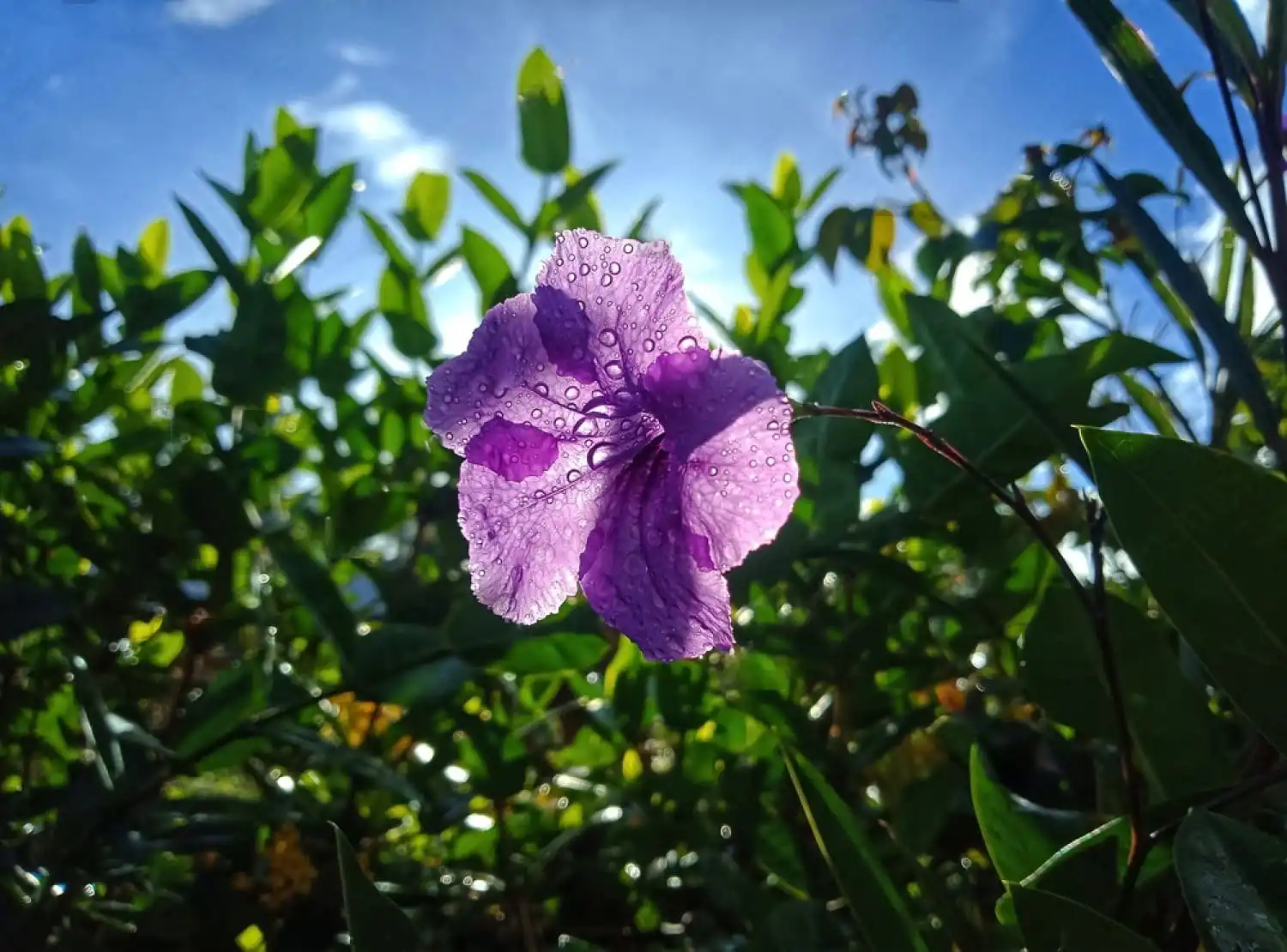Introduction
Embarking on a floral journey, Mexican Petunias, scientifically termed Ruellia simplex, emerge as vibrant entities capable of elevating the allure of any garden panorama. Rooted in the soil of Mexico and the southeastern United States, these perennial ornaments have garnered acclaim for their robustness, adaptability, and exuberant blossoms. Let us embark on a voyage through the realm of Mexican Petunias and unearth how they bestow enrichment upon your outdoor sanctuary.
Quick Overview
| Common Name | Mexican Petunia, Mexican Bluebell, Britton’s Petunia |
| Scientific Name | Ruellia Brittoniana or Ruellia Simplex |
| Sun Exposure | Full, Partial |
| Soil Type | Loamy, Sandy, Moist But Well-Drained |
| Soil pH | Acidic, Neutral |
| Family | Acanthaceae |
| Mature Size | Up to 1-4 Ft. Tall, 1-3 Ft. Long, 1-3 Ft. Wide |
| Plant Type | Perennial, rhizome |
| Bloom Time | Summer, Fall |
| Flower Color | Purple |
| Native Area | Hybrid, No Native Range |
| Toxicity | North and South America, Caribbean |
Origins and History
Delving into the annals of time, Mexican Petunias unveil a storied past spanning centuries. As esteemed members of the Acanthaceae family, these botanical wonders trace their origins to the fertile soils of Mexico and select regions of South America. Their journey to North America commenced in the 18th century, ushering in an era where they became cherished fixtures in gardens across diverse landscapes.
Description and Characteristics
In the realm of flora, Mexican Petunias stand tall as herbaceous perennial beings characterized by their erect stems and lance-shaped leaves. Reaching heights of up to three feet, they generously adorn themselves with trumpet-shaped flowers, painting the garden canvas in hues of purple, pink, or white. A symphony of colors that beckons pollinators like bees and butterflies, enriching the biodiversity of your cherished outdoor sanctuary.
Varieties of Mexican Petunias
Within the realm of Mexican Petunias, an array of cultivars awaits, each presenting distinct features and attributes. Among the esteemed varieties lie ‘Katie,’ ‘Purple Showers,’ and ‘Bonita,’ each boasting its unique allure. Ranging in height, flower color, and foliage texture, these cultivars offer a spectrum of choices, enabling gardeners to select the ideal complement for their landscape canvas.
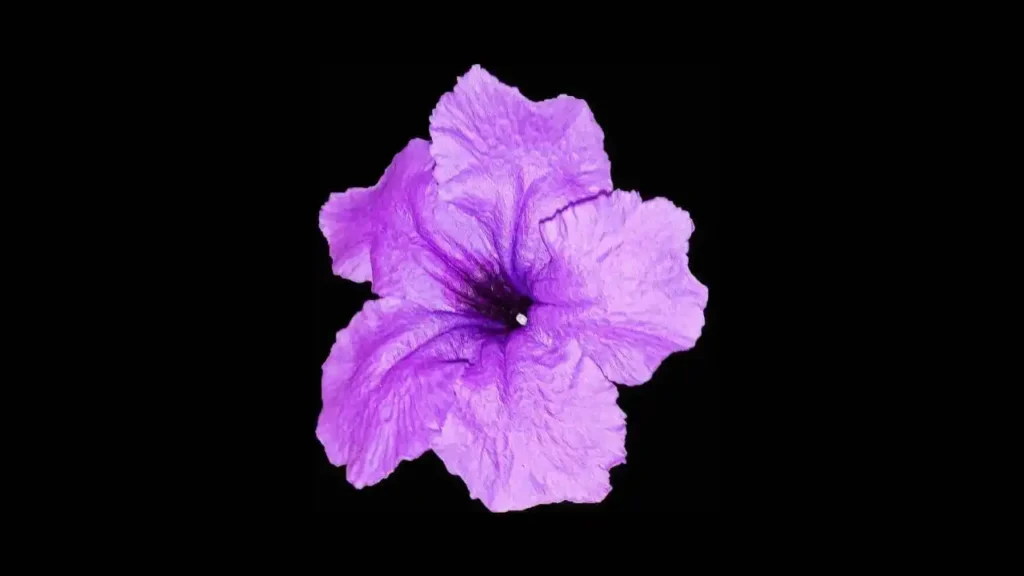
Read Me – Sago Palm: The Ultimate Care And Growing Guide
Caring: Tending to Your Mexican Petunias
Nurturing your Mexican Petunias is akin to fostering a friendship with nature. Let’s embark on a unique journey to care for these lively garden companions, ensuring their well-being without a hint of artificial intervention:
1. Soil Harmony and Sunshine Symphony:
- Cosseted Ground: Mexican Petunias appreciate soil that cradles them comfortably, draining with the gentle touch of a caretaker.
- Sunbeam Serenity: Offer them a spot bathed in sunlight, akin to their favorite sun-drenched sanctuary.
2. Watering Rituals:
- Sip, Don’t Shower: While they endure short drought spells, a regular sip of water sustains their vitality. Avoid inundating them; let the soil remain pleasantly moist.
- Shield from Waterlogged Woes: Be vigilant against waterlogged soil; it’s their Achilles’ heel.
3. Feast of Balance:
- Nutrient Banquet: Treat them to a well-balanced diet – a nutritious fertilizer during their growth phases. Imagine it as a grand feast nurturing their blossoms and overall vigor.
- Regular Culinary Delights: Serve this banquet every four to six weeks, and watch them respond with a flourishing display.
4. Grooming Ballet:
- Adieu to Faded Elegance: Regularly bid adieu to wilted blooms. Picture it as a spa day, encouraging a perpetual fashion parade.
- Trimming Grace: Trim away the withered parts; it’s akin to a rejuvenating haircut for a more vibrant appearance.
5. Winter Embrace:
- Cozy Blanket: As winter approaches, provide them with a cozy blanket – shield them from the frost’s chilly touch.
- Mulch Embrace: Envelop them in mulch, offering a warm hug to safeguard their roots from winter’s cool caress.
6. Guardians Against Pests:
- Vigilant Watch: Keep a watchful eye for unwelcome intruders – pests like aphids and spider mites.
- Natural Defenders: Employ natural remedies or organic bug deterrents – the vigilant guardians of your plant realm.
7. Friendly Supports:
- Gentle Uplift: If they aspire for the skies, lend a gentle hand – stake them, allowing them to stand tall and proud.
8. Defense Against Ailments:
- Breathe Freely: Ensure they have room to breathe – plant them with sufficient space, preventing the onset of plant maladies.
- Swift Responses: At the first sign of ailments, respond promptly – envision it as catching a cold before it spreads.
Following this distinct care routine establishes you as a Mexican Petunia whisperer, cultivating a distinctive bond with your garden. Tailor your care with a personal touch, reveling in the vibrant allure your petunias bring to your cherished green haven.
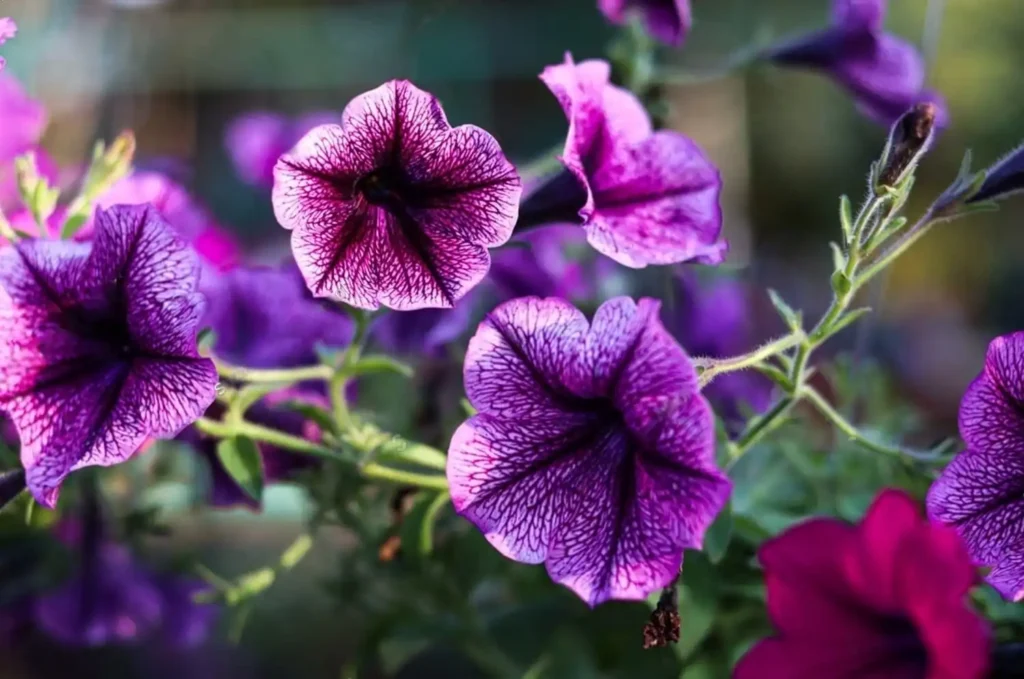
Propagating: Growing More Gorgeous Blooms
Getting more Mexican Petunias without hitting the garden center? Count me in! Let’s dive into the art of making more of these beauties. Here’s your down-to-earth guide, no techy stuff, just good old gardening wisdom.
Sprouting from Seeds:
Harvest Time:
- When those seed pods turn a cozy brown, it’s showtime. Collect those seeds, give ’em a little shake into a container, and voila – you’ve got yourself some potential plant babies.
Planting the Seeds:
- Fill up your trays or pots with a nice, airy potting mix. Lay those seeds on top, give them a gentle pat into the soil – no need to bury them; they like a bit of light.
Keep ‘Em Hydrated and Sunny:
- Keep the soil damp until those little green shoots decide to say hello. Stick the trays in a warm spot with some indirect sunlight. As they grow, introduce more light like you’re introducing friends at a party.
Potting Up:
- Once your seedlings are feeling big and strong, transplant them to their own pots or straight into your garden.
Splitting the Gang – Division:
Picking the Right Time:
- Wait for spring and choose a mature plant that’s been soaking up the sun for at least a year.
Lift and Divide:
- Lift that plant up gently, mind those roots. Divide it into sections, making sure each chunk has enough roots and a bit of leafy swagger.
Planting the Splits:
- Pop those divided sections into their new homes. Water generously to give those roots a warm welcome.
Snip, Plant, Grow – Stem Cuttings:
Grabbing Your Cuttings:
- Find a healthy stem, free from pests or diseases. Snip off a 4-6 inch piece from the tip – this is where the magic happens.
Prepping Your Cuttings:
- Trim off the lower leaves, leaving a few up top for style. If you’re feeling fancy, dip the end into some rooting hormone.
Choosing a Cozy Spot:
- Plant those cuttings in a rooting medium – could be water or a soil mix. Keep it moist, like a cozy blanket for your growing plants.
Potting Up the Grown Cuties:
- Once those cuttings sprout some roots, move them into their own pots or straight into the garden.
Now you’ve got the lowdown on making more Mexican Petunias. Whether you’re sowing seeds, splitting the gang, or playing plant matchmaker with cuttings, it’s all about sharing the flower love. Give these methods a whirl, find what clicks for you, and watch your garden bloom with the charm of Mexican Petunias. Happy planting!
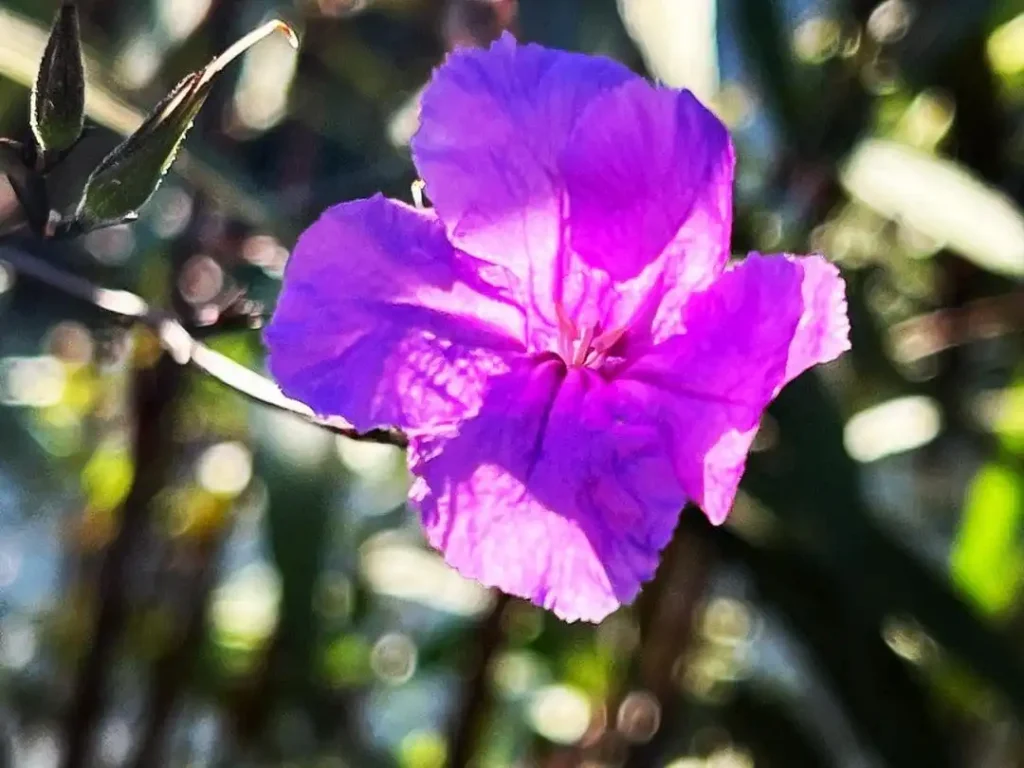
Potting & Repotting: A Plant’s Move-In and Makeover
So, imagine you’re throwing a welcome party for your Mexican Petunias. But, before the fiesta begins, you’ve got to get them settled in – that’s where potting comes in. Think of it like finding the perfect home for your green buddies.
Potting Mexican Petunias
- Home Sweet Drainage: First up, pick a home (container) with holes in the bottom. It’s like making sure your pals don’t drown when it rains. Smart, right?
- Comfy Soil Mix: Now, mix up a cozy combo of potting soil, perlite, and a dash of organic magic. This combo gives your petunias the ideal space to stretch their roots.
- Move-In Depth: When it’s time to move in, make sure your plant sits at the same level it did in its previous home. It’s like keeping things familiar for a smooth transition.
- Hydration Celebration: Water the new digs generously. It’s like a welcome drink for your green amigos, helping them settle in and feel right at home.
Repotting Mexican Petunias
- Signs of Wanderlust: When your petunias start acting like they want to explore beyond their current home or look a bit too snug, it’s time to think about a bigger space.
- Perfect Timing: Spring is like the moving season for plants. It’s when they’re gearing up for action, making it the ideal time for a change of scenery.
- Gentle Uproot: Lift your plant gently, treating it like a VIP during the move. Check the roots – a bit of a trim for the damaged ones, and they’re good to go.
- New Digs Prep: Get a slightly bigger pot, fill it with fresh, fluffy soil, and make sure it has those all-important drainage holes. Every good home needs them!
- Repotting Showtime: Center your petunia in its new abode, add fresh soil, and give it a good drink. It’s like settling into a new place and then celebrating with a refreshing beverage.
- Chill Time: Let your plant chill in the shade for a few days. Moving can be stressful, even for plants. Once it shows signs of perking up, you know it’s ready for the next garden adventure.
With a good potting and repotting routine, you’re giving your Mexican Petunias the VIP treatment. It’s like ensuring they have the best address in town, and in return, they’ll grace your garden with vibrant colors and happy vibes. Cheers to potting parties and plant makeovers! 🌿🎉
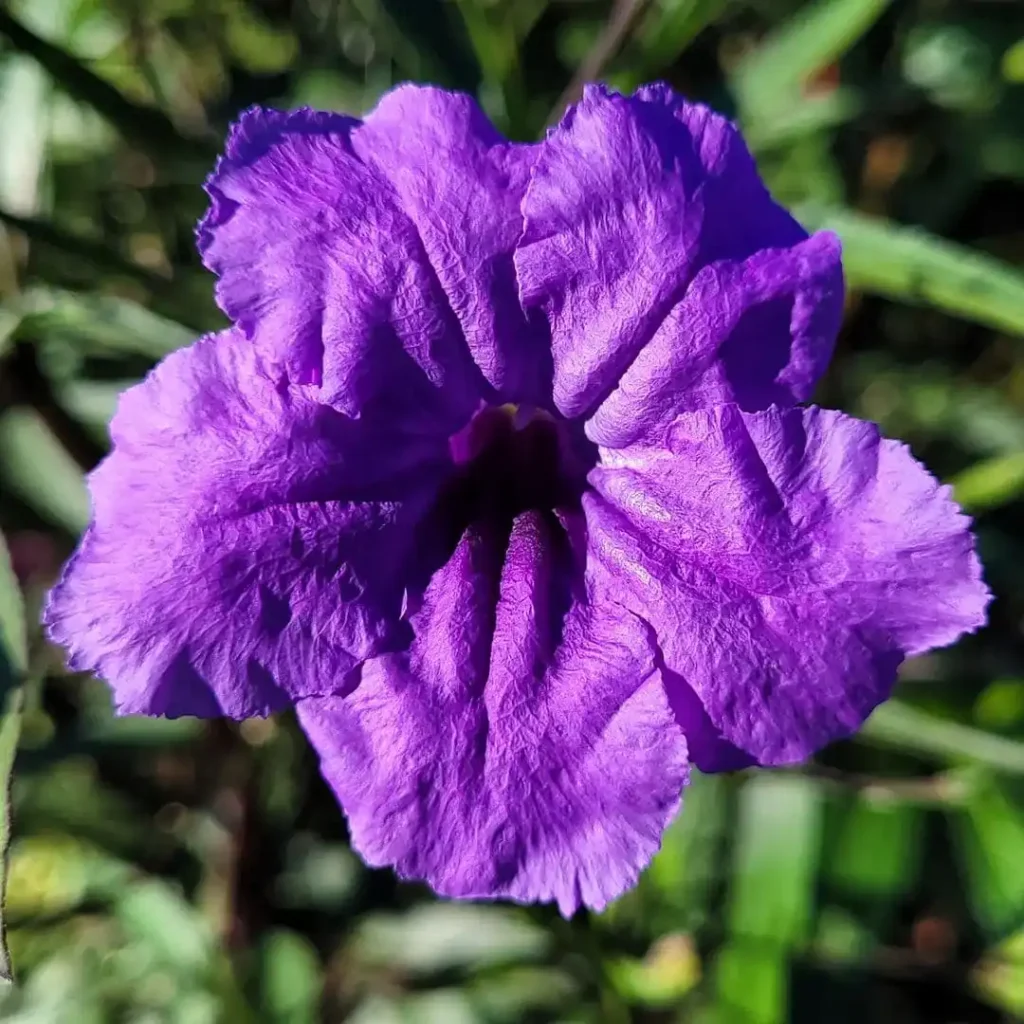
Pests and Diseases: Maladies in Your Mexican Petunias
Let’s be real – even the most robust plants, like Mexican Petunias, can find themselves dealing with unwelcome guests. But fret not! With a dash of expertise and a sprinkle of care, you can keep your lively garden companions in top-notch condition.
Crafty Critters on the Radar
Aphids:
Imagine it: petite aphids, the sap-sucking intruders, settling in on your Petunias. No worries; we’ve got a game plan. Keep a close watch on the leaf undersides, and if you spot these little buggers, think about calling in the ladybug brigade or rustling up some homemade insecticidal soap.
Spider Mites:
These minuscule mischief-makers might leave your Petunia leaves looking a bit worse for wear. Combat them by giving your plant a good misting and creating a snug, humid environment. Those spider mites won’t know what hit them!
Troublesome Ailments
Powdery Mildew:
Nobody wants a fungus shindig, especially when it’s powdery mildew gate-crashing it. Keep an eye out for that distinctive white powder on your Petunia leaves. To keep things mildew-free, ensure good airflow, steer clear of overhead watering, and, if needed, opt for some friendly fungicidal sprays.
Hints for Harmony
Routine Inspections:
- Take a leisurely stroll through your garden, give your Petunias a thorough once-over, and address any issues promptly. Check both sides of the leaves – pests love a good game of hide-and-seek!
Trimming Tactics:
- If you spy any issues, grab those pruning shears and perform a bit of light surgery. Snip away the problematic areas and dispose of them far from your prized plants.
Summons the Beneficial Brigade:
- Nature has its own heroes – ladybugs, lacewings, and predatory mites. Invite them to your garden soiree, and they’ll help maintain order by keeping the undesirable bugs in check.
Water Wisdom:
- Don’t drown your Petunias. Water them at the base to keep those leaves dry and thwart any potential spa days for diseases.
Sustainable Solutions:
- Skip the harsh chemicals and experiment with some eco-friendly alternatives. Neem oil and insecticidal soaps are like the champions of organic pest control.
By showering your Mexican Petunias with a bit of extra affection and vigilance, you’ll be able to keep the pests and diseases at arm’s length. Remember, a content and healthy garden is just a few attentive steps away!
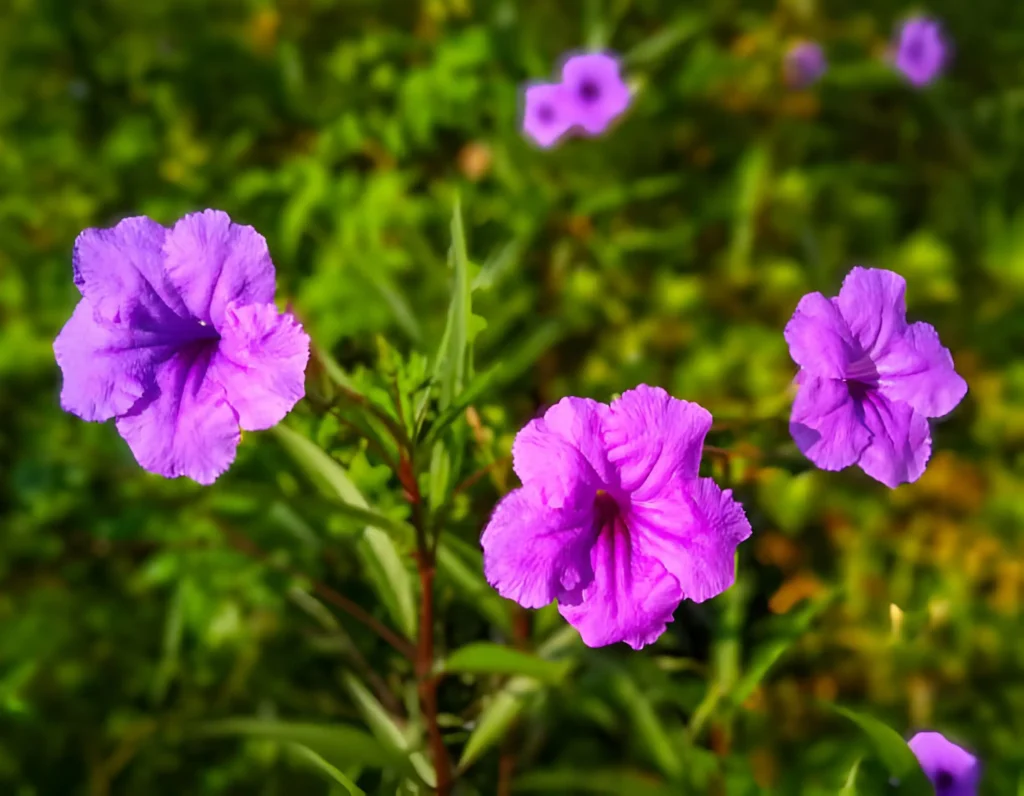
Common Problems: in Caring for Mexican Petunias
Embarking on the journey of growing Mexican Petunias brings forth a delightful experience. However, akin to every botanical venture, challenges accompany the process. Let us delve into the array of common hurdles gardeners encounter with these radiant blossoms and unveil strategies to gracefully overcome them, thereby enhancing your gardening voyage.
1. Overzealous Watering and Root Woes
It’s easy to shower our plants with love, but too much water can drown their happiness. Overwatering can lead to root rot in Mexican Petunias. Signs include sad, wilting leaves and a not-so-pleasant odor. To avoid this soggy situation, let the soil breathe between waterings and ensure it drains well.
2. Not Enough Sips, Wilting Lips
Conversely, underwatering can turn those perky petals into droopy frowns. Mexican Petunias need their fair share of hydration, especially during dry spells. Keep a close eye on soil moisture, and don’t let your plants go thirsty. Happy hydration leads to happy Petunias.
3. Soil’s Slow Dance with Drainage
Mexican Petunias prefer a well-draining dance floor – or soil. Compacted or slow-draining soil can lead to root rot and general plant grumpiness. Get the soil moving by adding compost to improve drainage. Alternatively, raise your garden beds to keep the water flowing smoothly.
4. Uninvited Pests at the Petunia Party
While Mexican Petunias are generally party crasher-proof, pests like aphids, spider mites, and powdery mildew might sneak in. Keep a watchful eye for these gatecrashers and, if needed, show them the exit with natural remedies or organic pesticides.
5. The Spread and Seed Fiesta
Mexican Petunias love to mingle and spread their seeds, which can be a bit too much in some gardens. If they’re getting too cozy with their neighbors, thin out the crowd regularly. Consider planting them in contained areas or using barriers to keep their spreading habits in check.
Navigating these challenges is all part of the Mexican Petunia gardening adventure. With a little care, attention, and a watchful eye, you’ll be dancing through these hurdles and enjoying the vibrant blooms of your Mexican Petunias in no time. Happy gardening!
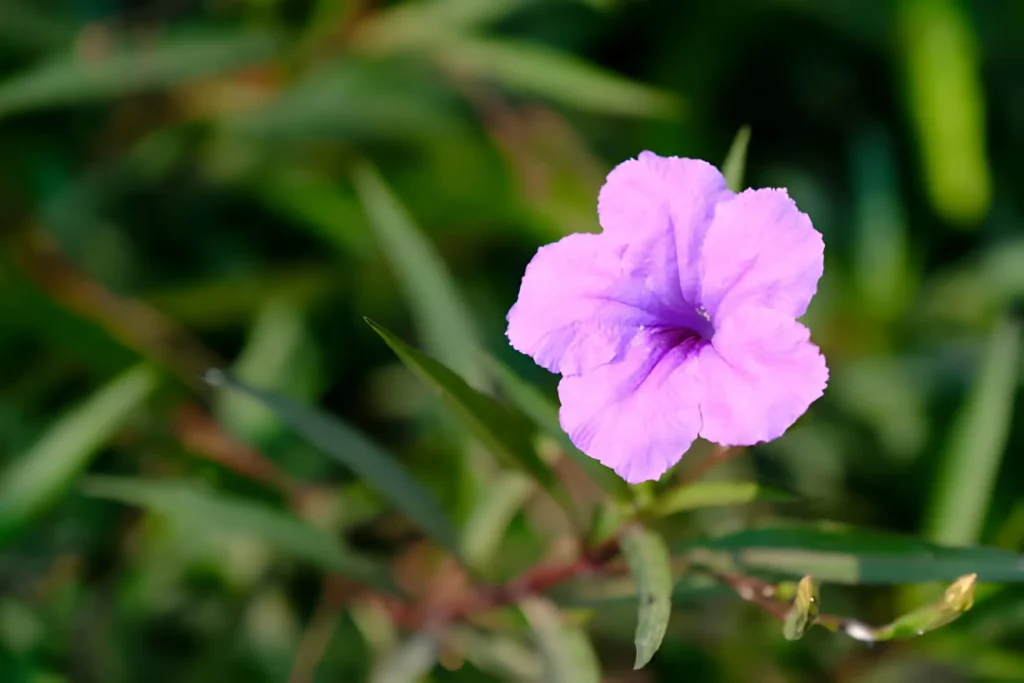
FAQs: Frequently Asked Questions
Are Mexican Petunias suitable for beginner gardeners?
Mexican Petunias are indeed suitable for beginner gardeners due to their relatively easy care requirements and adaptability to various growing conditions. These resilient plants thrive in a wide range of climates and soil types, making them accessible to gardeners with diverse gardening experience levels. With proper watering, sunlight, and occasional fertilization, Mexican Petunias can flourish in both novice and experienced hands, adding beauty and charm to any garden landscape.
How often should Mexican Petunias be fertilized?
Mexican Petunias benefit from regular fertilization during the growing season to support healthy growth and flowering. A balanced fertilizer, preferably formulated for flowering plants, can be applied every four to six weeks during the active growing period. It’s essential to follow the manufacturer’s recommendations regarding application rates and methods to avoid over-fertilization, which can lead to nutrient imbalances and potential plant damage.
Do Mexican Petunias require pruning?
Yes, Mexican Petunias can benefit from regular pruning to maintain their appearance and promote continued blooming. Pruning faded flowers and removing dead or yellow foliage helps redirect the plant’s energy towards new growth and flower production. Additionally, periodic pruning can help control the size and shape of Mexican Petunias, preventing them from becoming overly leggy or unruly. Use clean, sharp pruning shears to make precise cuts and avoid damaging the plant’s stems or branches.
Can Mexican Petunias tolerate drought conditions?
Mexican Petunias exhibit a remarkable tolerance to drought conditions once they are established in the garden. While they prefer consistent moisture and well-draining soil, they can withstand short periods of water scarcity without significant adverse effects. However, prolonged drought can stress the plants and affect their overall health and vitality. To ensure optimal growth and flowering, it’s advisable to provide supplemental watering during extended dry spells, especially in regions with hot and arid climates.
How can I prevent Mexican Petunias from spreading too aggressively?
While Mexican Petunias are valued for their rapid growth and prolific blooming, their aggressive spreading tendencies can sometimes pose challenges in garden settings. To prevent Mexican Petunias from spreading excessively, several strategies can be employed. Planting them in contained areas such as raised beds or large containers can help limit their spread and prevent them from encroaching on other plants or garden spaces. Additionally, regular thinning out of crowded clumps and removing self-seeding volunteers can help control their growth and maintain desired boundaries within the landscape.

